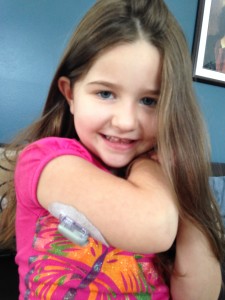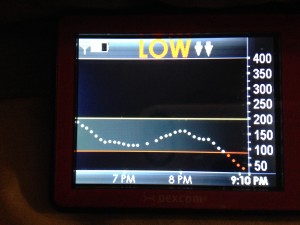Monthly Archives: July 2014
Diabetes-Related Facebook Posts
I wanted to add some of the posts I’ve made on Facebook over the last year.
June 27, 2014
Okay, friends – we need help. We really need a cure for type one diabetes. Lyla is fairly resilient, but I don’t know if I can say the same for myself. Her blood sugar dropped to 29 at 2:30 this morning (normal is around 100). That is the lowest she has ever been. She was mostly asleep, but was very unsettled. I laid in her bed with her and held her, hoping the juice would kick in before she started to seizure. It was terrifying. Last night we went to the Lehi Rodeo. I let her pick out one treat to eat there, and carefully dosed her for it. She was so excited about her treat that she didn’t seem to notice or care that all of her cousins around her were eating lots of snacks and treats. I am tired of having to choose between her physical health and her psychological health (letting her be a “normal” kid). I am tired of her life hanging by a thread. I’m tired of attending every game, practice, class, birthday party and playdate she goes to, because she can’t be left. I’m tired of hyper-vigilant days and frequently interrupted nights. I’m tired of needles and blood and numbers. Mostly, I’m just tired.
It took a long time for me to go back to sleep last night. I thought about how fragile her life is and how badly we need a cure. Obviously, that lead me to thinking about the JDRF walk and how we are gearing up for the walk again this year. It will be our third year walking and fundraising for the JDRF. We do it because we know they are funding the research that will cure this disease, and we want that more than anything else in the world. Lyla loves walk day (she thinks she is the princess of the walk), but it has also been great for Greg and I to feel of your support. We appreciate you walking with us, fundraising with us, and donating to the cause. Your support helps get us through the days when we just don’t think we can do this anymore. We believe in the JDRF. We know they are getting close to a cure. Please help them get there.
April 17, 2014
My baby girl turned five years old today! It was a day filled with fun, friends, family, and princess things (FROZEN!!). Unfortunately, it was also a day filled with blood sugar highs and lows, finger pricks and insulin doses. We went to play at Kangaroo Zoo this morning – her blood sugar was 256 when we got there and 30 minutes later she was at 68. We gave her a juice box, which usually brings her up quickly, but 10 minutes later she was at 52. After another juice box, she finally got up to where she should have been. When her blood sugar was low, she was lying on the chair saying she wanted to go home and didn’t want to jump anymore (so not like her!). I hate that she has to deal with diabetes, especially on holidays and birthdays. We have always supported and advocated for the Juvenile Diabetes Research Foundation (JDRF) because they are funding research that will hopefully cure type one diabetes. Please consider donating $5 to the JDRF in honor of Lyla for her fifth birthday. Hopefully someday she will have diabetes-free birthday!
August 2, 2013
Greg and I had errands to run in Orem and Provo, so we told the kids we would stop at the Disney store if they were good. Lyla sang and skipped the whole way in. I stopped to check her blood sugar once we were in the mall. She was 52 (for reference, 100 is what non-diabetic bodies automatically regulate to) I grabbed skittles from my purse and fed her half a bag and figured that was more than sufficient. We got to the store and within two minutes she was sitting on the floor. Checked her again. 45. TERRIFYING. She had continued to drop even with the skittles. I reached for a juice box in my purse only to realize they were all gone. Greg literally picked her up and ran her to the food court, trying to keep her talking on the way because she looked like she was zoning out. He got her a full sugar soda and she was back to skipping and dancing within 15 minutes. I wish her parents recovered so quickly! It is times like this that remind me why I advocate and fundraise for the JDRF. We really need a cure.


